外研版(2019)选择性必修第一册Unit 6 Nurturing nature Starting out 课件(共16张PPT)
文档属性
| 名称 | 外研版(2019)选择性必修第一册Unit 6 Nurturing nature Starting out 课件(共16张PPT) | 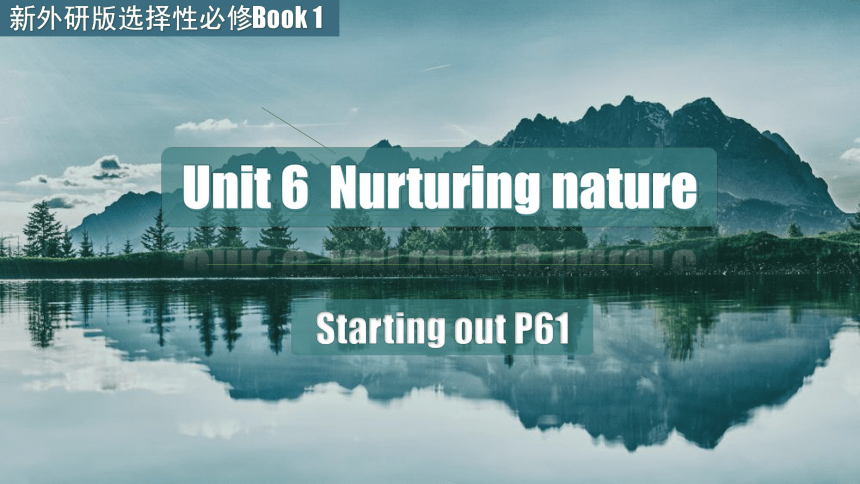 | |
| 格式 | pptx | ||
| 文件大小 | 38.9MB | ||
| 资源类型 | 教案 | ||
| 版本资源 | 外研版(2019) | ||
| 科目 | 英语 | ||
| 更新时间 | 2024-07-16 20:35:37 | ||
图片预览

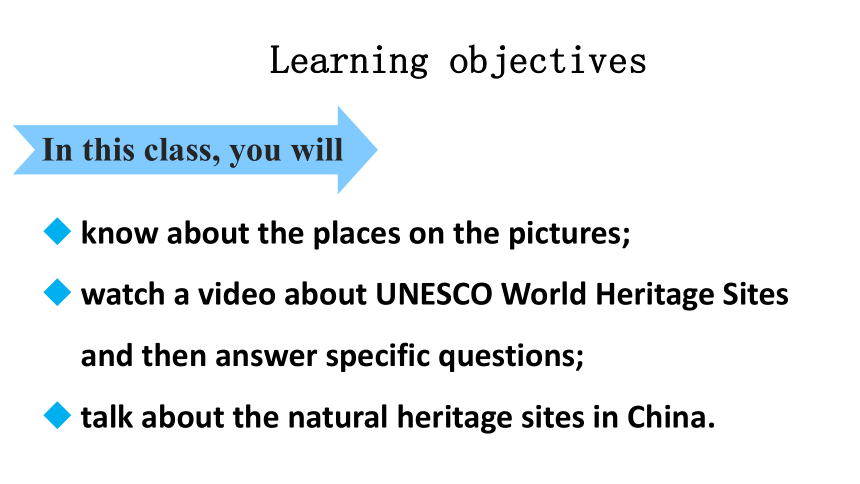
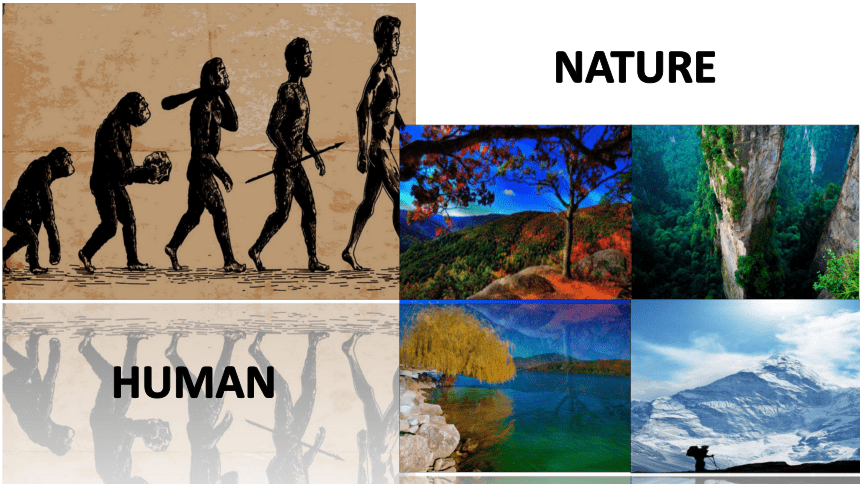
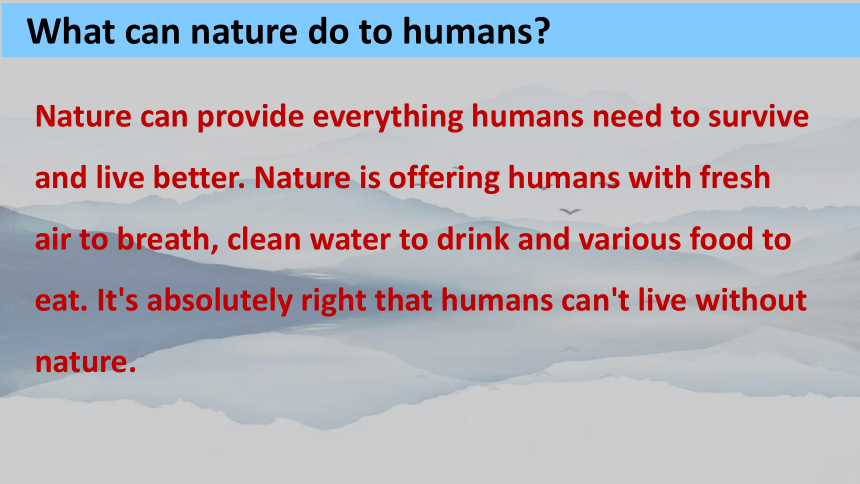
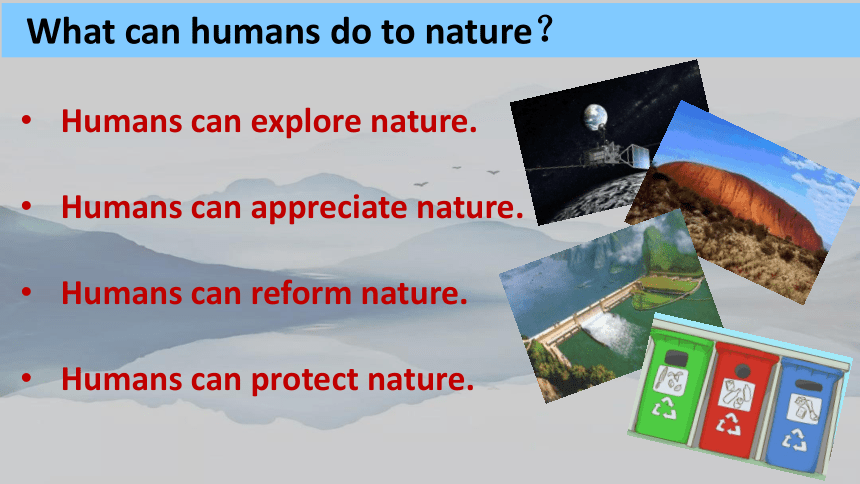
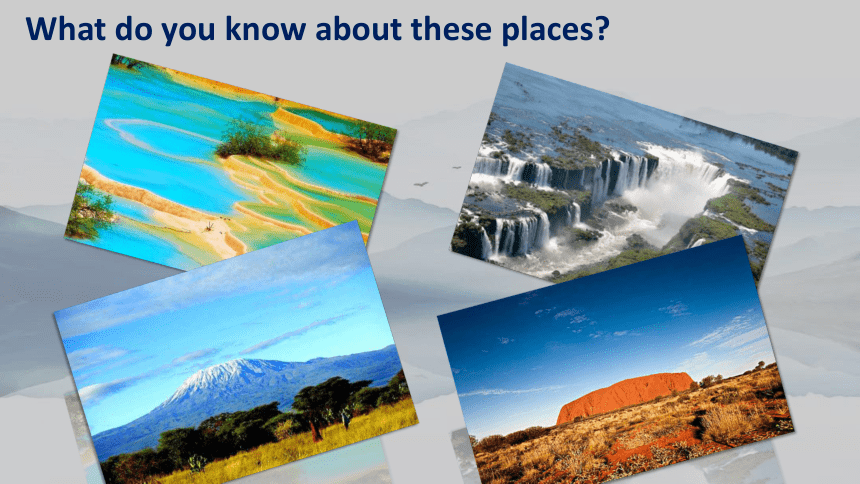
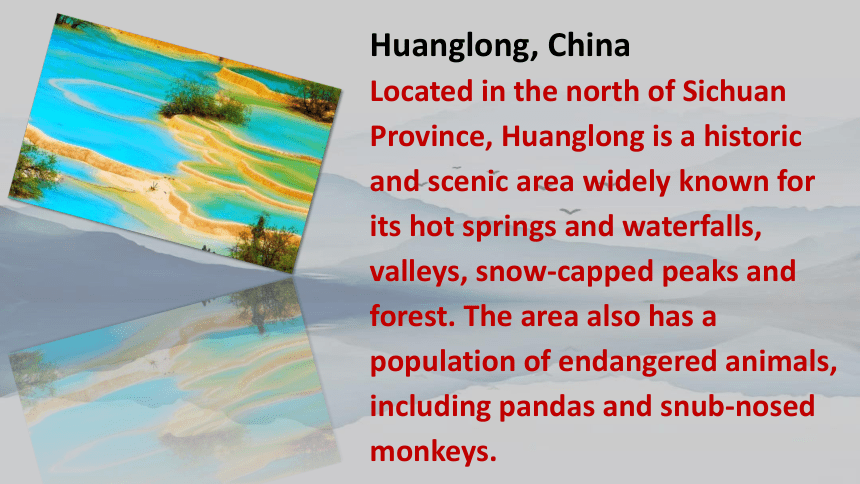
文档简介
(共16张PPT)
Unit 6 Nurturing nature
新外研版选择性必修Book 1
Starting out P61
Learning objectives
In this class, you will
know about the places on the pictures;
watch a video about UNESCO World Heritage Sites and then answer specific questions;
talk about the natural heritage sites in China.
HUMAN
NATURE
What can nature do to humans
Nature can provide everything humans need to survive and live better. Nature is offering humans with fresh air to breath, clean water to drink and various food to eat. It's absolutely right that humans can't live without nature.
What can humans do to nature?
Humans can explore nature.
Humans can appreciate nature.
Humans can reform nature.
Humans can protect nature.
What do you know about these places
Huanglong, China
Located in the north of Sichuan Province, Huanglong is a historic and scenic area widely known for its hot springs and waterfalls, valleys, snow-capped peaks and forest. The area also has a population of endangered animals, including pandas and snub-nosed monkeys.
Iguazú Falls, Argentina and Brazil
The Iguazú Falls originate from the Iguazú River and are located on the border of Argentina and Brazil. The heights of the falls vary from 60 metres to 82 metres.
Mount Kilimanjaro, Tanzania
It is located in the north-east of Tanzania. It is at 5,895 metres above sea level and is the highest mountain in Africa. Surrounded by forest, it is also the world's highest free-standing mountain.
Uluru, Australia
Uluru is a large sandstone rock formation in the south-west of Australia's Northern Territory. A sacred site to indigenous Australians, Uluru rises 348 metres above the desert plain and reaches a height
of 863 metres above sea level.
What do these places have in common
Huanglong, China
Iguazú Falls, Argentina and Brazil
Mount Kilimanjaro, Tanzania
Uluru, Australia
Watch and think
Let’s watch the video: UNESCO World Heritage Sites
Watch and think
1. What are the three types of World Heritage Sites
Cultural World Heritage sites
Natural World Heritage sites
Mixed World Heritage sites
Answer the questions after watching.
2. What does “Mixed World Heritage sites” mean
3. What is the famous example about Cultual World Heritage sites
4. What does Natural World Heritage sites protect
5. How many Mixed World Heritage sites are mentioned in the video
Watch and think
Answer the questions after watching.
What other natural heritage sites in China do you know of
Group work
Thank you!
Unit 6 Nurturing nature
新外研版选择性必修Book 1
Starting out P61
Learning objectives
In this class, you will
know about the places on the pictures;
watch a video about UNESCO World Heritage Sites and then answer specific questions;
talk about the natural heritage sites in China.
HUMAN
NATURE
What can nature do to humans
Nature can provide everything humans need to survive and live better. Nature is offering humans with fresh air to breath, clean water to drink and various food to eat. It's absolutely right that humans can't live without nature.
What can humans do to nature?
Humans can explore nature.
Humans can appreciate nature.
Humans can reform nature.
Humans can protect nature.
What do you know about these places
Huanglong, China
Located in the north of Sichuan Province, Huanglong is a historic and scenic area widely known for its hot springs and waterfalls, valleys, snow-capped peaks and forest. The area also has a population of endangered animals, including pandas and snub-nosed monkeys.
Iguazú Falls, Argentina and Brazil
The Iguazú Falls originate from the Iguazú River and are located on the border of Argentina and Brazil. The heights of the falls vary from 60 metres to 82 metres.
Mount Kilimanjaro, Tanzania
It is located in the north-east of Tanzania. It is at 5,895 metres above sea level and is the highest mountain in Africa. Surrounded by forest, it is also the world's highest free-standing mountain.
Uluru, Australia
Uluru is a large sandstone rock formation in the south-west of Australia's Northern Territory. A sacred site to indigenous Australians, Uluru rises 348 metres above the desert plain and reaches a height
of 863 metres above sea level.
What do these places have in common
Huanglong, China
Iguazú Falls, Argentina and Brazil
Mount Kilimanjaro, Tanzania
Uluru, Australia
Watch and think
Let’s watch the video: UNESCO World Heritage Sites
Watch and think
1. What are the three types of World Heritage Sites
Cultural World Heritage sites
Natural World Heritage sites
Mixed World Heritage sites
Answer the questions after watching.
2. What does “Mixed World Heritage sites” mean
3. What is the famous example about Cultual World Heritage sites
4. What does Natural World Heritage sites protect
5. How many Mixed World Heritage sites are mentioned in the video
Watch and think
Answer the questions after watching.
What other natural heritage sites in China do you know of
Group work
Thank you!
